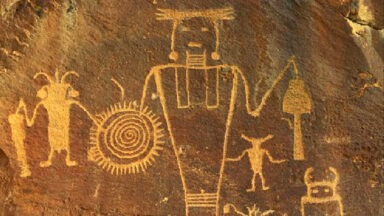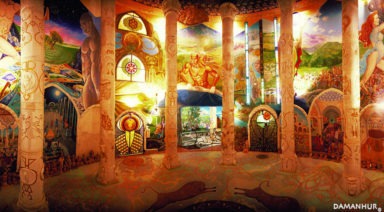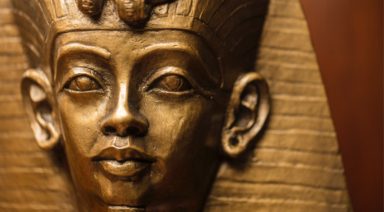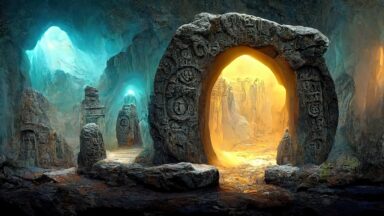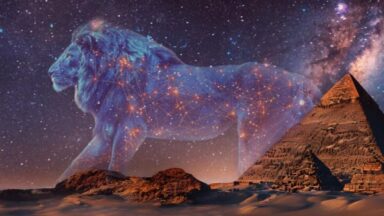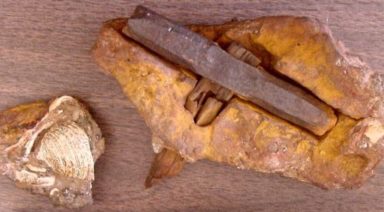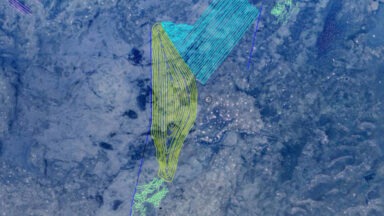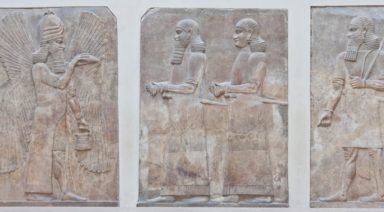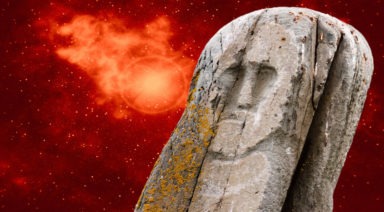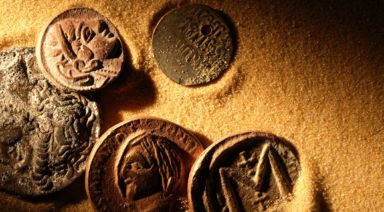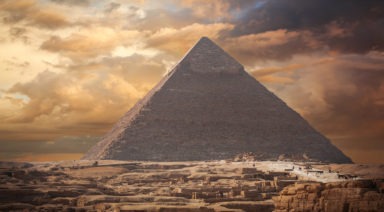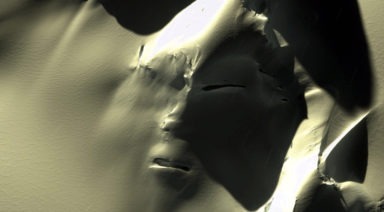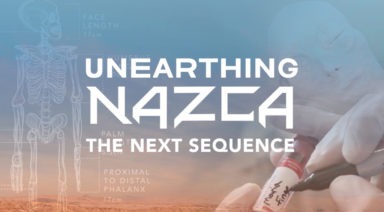Australian Fires Uncover Aboriginal Technology Older Than Stonehenge, Pyramids

We’re all familiar with the tragic sights of the recent brush fires that ravaged Australia. From Victoria and New South Wales, all the way up through Queensland and large swaths of Western Australia. Over 25 million acres of land have burned at a seemingly unstoppable rate.
It’s estimated one billion animals including birds, mammals, and reptiles have perished, while pollution from the fires has spread into major cities like Sydney and Canberra, even reaching as far as New Zealand and Papua New Guinea.
The world has been deeply touched by images of iconic Australian animals such as koalas and kangaroos struggling to find water and food and has responded to help Australia heal and rebuild. Many have regarded the Australian brush fires as a sign of climate change as well as a warning sign; while firestorms are normal occurrences in Australia, the size, scope, and timing of this latest disaster in a year already on record as being the hottest in Australia’s human history are unprecedented.
But in the wake of the brushfires, Australian archaeologists and historians unearthed new insights that may show how ancient aboriginals technologies and lifestyles were significantly more advanced than once thought.
The spread of civilization may be likened to a fire; first, a feeble spark, next to a flickering flame, then a mighty blaze, ever increasing in speed and power. — Nikola Tesla
Ancient Aquaculture Archaeological Sites
How could the widespread bushfire in 2019 reveal secrets about an ancient world? As in most things Australian, the story begins in the bush. The Budj Bim Cultural Landscape, a vast aquaculture expanse located in Victoria in southeastern Australia, was struck by lightning. The blaze would have normally been handled by typical firefighting machinery; however, Budj Bim is now a Unesco World Heritage site and is therefore protected, which meant that firefighters had to battle the flames on foot.
In the aftermath of the fire, inspectors discovered a new section of the historical landscape amidst the cleared brush. This newly found area of what is referred to as Australia’s “archeological crowned jewel” in a continent rich with ancient ruins, sheds important light on a relatively unknown ecosystem that is believed to be older than Egypt’s pyramids or Stonehenge.
The ancient aquaculture was central to the indigenous Gunditjmara aboriginal people who used the system to catch short-finned eels, an important source of food and commerce. And though the system was constructed during the Neolithic period when stone tools were used, it was designed with sustainability in mind, in such a way that only mature eels would be captured and young eels were allowed to escape.
Built upon the lava valleys created by the dormant volcano of the same name, the site boasts a complex network of channels, weirs, and dams that supported the culture for 6,000 years. Australian archaeology and UNESCO show that Budj Bim is the oldest and most extensive system of its kind that has ever existed and establishes the Gunditjmara as some of the earliest and most proficient engineers.
Beyond the economic, social, and environmental impact, the Budj Bim represents the spiritual center for the Gunditjmara people and all of Australia, who link it to the ancestral sense of “deep time” stories that connect them for tens of thousands of years. The Budj Bim is one of the many ways the myth of the hunter-gatherer or nomadic aboriginal Australians is being reconsidered.
In fact, it is thought that the word “nomad” is a distinctly colonial, or white settler claim that the land was “terra nullius,” or belonging to nobody. What is closer to the truth is that the diverse first Australians lived in sophisticated dwellings that were built according to region, weather, and environment and that challenge the status quo thinking on who has bragging rights to original civilizations.

Aquaculture at Budj Bim National Park
Little Known Facts About Ancient Australia
The commonwealth of Australia, as it is known, is a country known for its wide-open, brush-filled landmass and is the sixth-largest in area size in the world. A highly developed country, Australia boasts a diverse population of close to 26 million people from all walks of life, ethnicities, and backgrounds. The aborigines, or the indigenous people of Australia, are a well-known part of the continent’s history and culture. But despite the aborigines being one of the oldest civilizations in the world, the way in which we have thought of them is now changing.
DNA analysis shows that ancient Australia can be dated back to have existed between 75,000-55,000 years ago, close to 25,000 years before the first human migration into what is now known as Europe and Asia. And there is now more evidence showing not just human occupation, but a highly evolved civilization with established and complex art, living, and technological systems, as well as diversity within the many different branches of the population.
It is also believed that indigenous Australians were among humans’ earliest ocean travelers, migrating from Africa to the isolated island during a period of historically-low water levels. Unlike in Europe, which was largely dependent upon agriculture and therefore subject to crop failures that led to mass migration, the ancient Australians settled down for thousands of years and established sophisticated systems of tools, commerce, trading, and social structures.
While genetically the aboriginal people have been traced to one mitochondrial family tree, over time the civilization branched out to many genetic variations. Recent genetic mapping indicates a wide range of distinct indigenous populations, which is reflected in the more than 500 aboriginal nations who spoke distinctly different dialects, with as many as 250 kinds of aboriginal languages.
Equally diverse are the iconic ancient Australian paintings, which served more than artistic purposes or entertainment. There is no record of a written language, so the paintings serve as visual storytelling for ancient Australian cultures, as well as a philosophical document. While language, art, religion, and migration patterns may seem to be the stuff of natural history museums and books, the recent brush fires provided an unusual opportunity to learn even more about the first Australian civilization, with lessons that resonate today.
Beyond Budj Bim: Other Ancient Australian Sites
The most famous ancient Australian landmark is undoubtedly Uluru, or formerly “Ayers Rock,” the enormous sandstone monolith located in Uluru-Kata Tjuta National Park in Australia’s Northern Territory. Uluru is home to some of the most ancient and treasured sacred Dreaming Trails, or “songlines,” indigenous cultural codes that exist in the national park, so much so that climbing the rock is now banned.

Uluru, aka Ayers Rock
While most ancient sites are located in remote locations and are difficult to access, Birrarung Marr is situated right in Melbourne’s center, on the banks of the Yarra River. The ceremonial site consecrates eel migration and is where Tanderrum, a massive celebration of the Eastern Kulin nation, asking for safe passage, fair trade, and mutual understanding among different people.
Three hours west of Melbourne are the Grampians, or Grampians National Park, home to almost all of the ancient aboriginal rock art found in Australia. Over 400,000 acres of striking sandstone peaks, forests, and hiking trails features rock art created by Jardwadjali and Djab Wurrung peoples.
Like other ancient civilizations, Australia even has its own pyramid, the Gympie Pyramid, situated in Northern Australia’s province of Queensland. The origin of the terraced structure is mysterious, with theories ranging from it being built European settlers in the late 19th century to ancient Incas or Chinese. Attempts have been made to destroy the pyramid, which has only heightened the mystery surrounding the granite structure.
Lessons from the Brush Fires
Rainstorms have come and much of the Australian brush fires have been extinguished. What lessons have been learned as a result of this natural catastrophe which many believe was made worse by climate-impacting behavior? Amidst the new information coming forth from newly accessible areas like the aquaculture systems, there is as much fear in the archeological and aboriginal culture that irrevocable damage has been caused to other ancient Australian sites.
The earth holds many secrets, including those of ancient civilizations such as in Australia. As the brush continues to be cleared and more access is available to sacred spaces, perhaps the people of Australia and the world at large will re-examine how we live in connection to our planet and her limited resources; important lessons left behind by our ancestors. Are we ready to learn from them?
Ancient Footprints Evidence of 'Ant People' of Hopi Indian Lore

Ancient footprints buried for thousands of years are revealing their true date of creation thousands of years earlier than we thought and shaking up the conventional timeline. Could this validate Hopi stories of ancient Ant Men?
White Sands National Park in New Mexico today, is mostly chalky white desert and sand dunes, but thousands of years ago this was a temperate zone centered around the massive Lake Otero filled with flourishing plants, wildlife, and now we can confirm, humans. Ancient footprints originally discovered in 2009 have been radiocarbon dated to be from 21,000-23,000 years ago. Previous estimates of human habitation in this area were 13,000-16,000 years ago.
Ancient stone tools, footprints, and rock layers are difficult, if not impossible, to date. But scientists have found seeds from ancient spiral seed grass, mingled with some footprints. Those seeds were able to be carbon dated, proving humans were in the area and thriving thousands of years earlier than previously thought.
Jack Cary, researcher and author of “Paranormal Planet” commented on the significance of this discovery. “This is a huge point to shove back human migration. That means that you’re going to have to rewrite everything that’s associated in our science related to human migration. That is a huge problem for our anthropologists and for accepted science as a whole,” Cary said. “As investigators into ancient mysteries, this is one of the biggest things that we could ever discover because now we have absolute, inarguable proof that humans were there at this exact period of time.”
Why are investigators of ancient mysteries so excited about this find?
“This is the same area, the same place, and the same time that the Hopi Indians claimed that the so-called Ant People took them underground during a massive global cataclysm because the world basically caught fire according to their ancient, historical oral traditions. And this same event, strangely enough, can be found in the Book of Enoch when he describes a cometary impact. All of this would date back to around the same time period,” Cary said.
“And we have to remember that in Hopi language ‘Anu’ means ‘Ant’ and ‘Naki’ means ‘Friend,’ so the word Annunaki to the Hopi means ‘Ant Friends.’ And it was these ‘Ant Friends’ who twice took them underground, the second being when the last Ice Age actually melted creating a global flood that has been recorded in ancient histories worldwide. Now we have radiocarbon dated proof that there was in fact, human habitation in the right place, at the right time to make those oral histories viable.”



